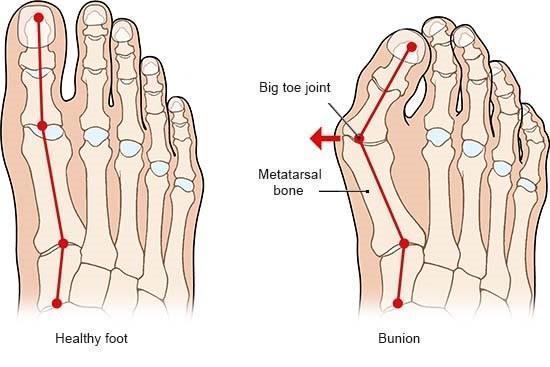Bunions and What to do for Care

Dr. Jason Homan is a podiatrist practicing in Southern California. Dr. Homan is a medical doctor specializing in the treatment of the foot , ankle and related parts of the leg. As a podiatrist, Dr. Homan diagnoses and treats conditions of the feet. The feet are key body parts that give a person stability, absorb shock,... more
Bunions are a very common medical condition that affects approximately 68 million Americans. In medical terms, a bunion is called hallux abductovalgus. Bunions are visually seen as an abnormal bump on the inside of the great toe joint. A bunion is more than just a bump. The big toe moves towards the second toe, and the bones become misaligned. Bunions are a progressive deformity. Bunions can become very painful, and it limits the types of shoegear that patients are able to wear. Bunions can also inhibit patients from participating in normal, daily activities, such as walking or running.
A common misconception is that bunions are caused by wearing narrow-toed shoes. While wearing tight shoes does not actually cause bunions, they can make the condition progressively worse faster. Bunions actually have a hereditary component and are caused by a faulty mechanical structure of the foot, and they are often passed down through generations. In fact, bunions are actually a compensatory mechanism that our feet uses to re-stabilize the structure of the foot due to pronation (or flattening of the arches).
To fully evaluate the deformity, you should see a foot and ankle surgeon for a full examination including x-rays. This will allow a full assessment of the severity of the deformity and help select the best treatment plan.
There are basically two types of treatments: non-surgical and surgical. Non-surgical treatments include changes in shoe wear, padding, orthotic devices, activity modifications, oral and topical medications, and possible injection therapy. The goal of non-surgical treatment is to reduce pain, delay the progression of the deformity, and reduce the chance of damage to the big toe joint. It is important to know that these treatments do not get rid of the bunion or correct the deformity. Ultimately, bunions are a surgical problem. The only way to get rid of the bump and straighten the toe is with a surgical correction.
If you are concerned about a bunion in yourself or a family member, I do advise to pursue a consultation with a podiatric surgeon. The strong difference between a podiatric surgeon and any foot/ankle surgeon is that podiatrist are specifically biomechanical experts of the foot and ankle. Bunions are actually a three-dimensional deformity; therefore, you have to address all angles of deformity in order to get full correction. Podiatric foot/ankle surgeons assess and keep in mind these factors when performing surgical correction of the foot and ankle.








